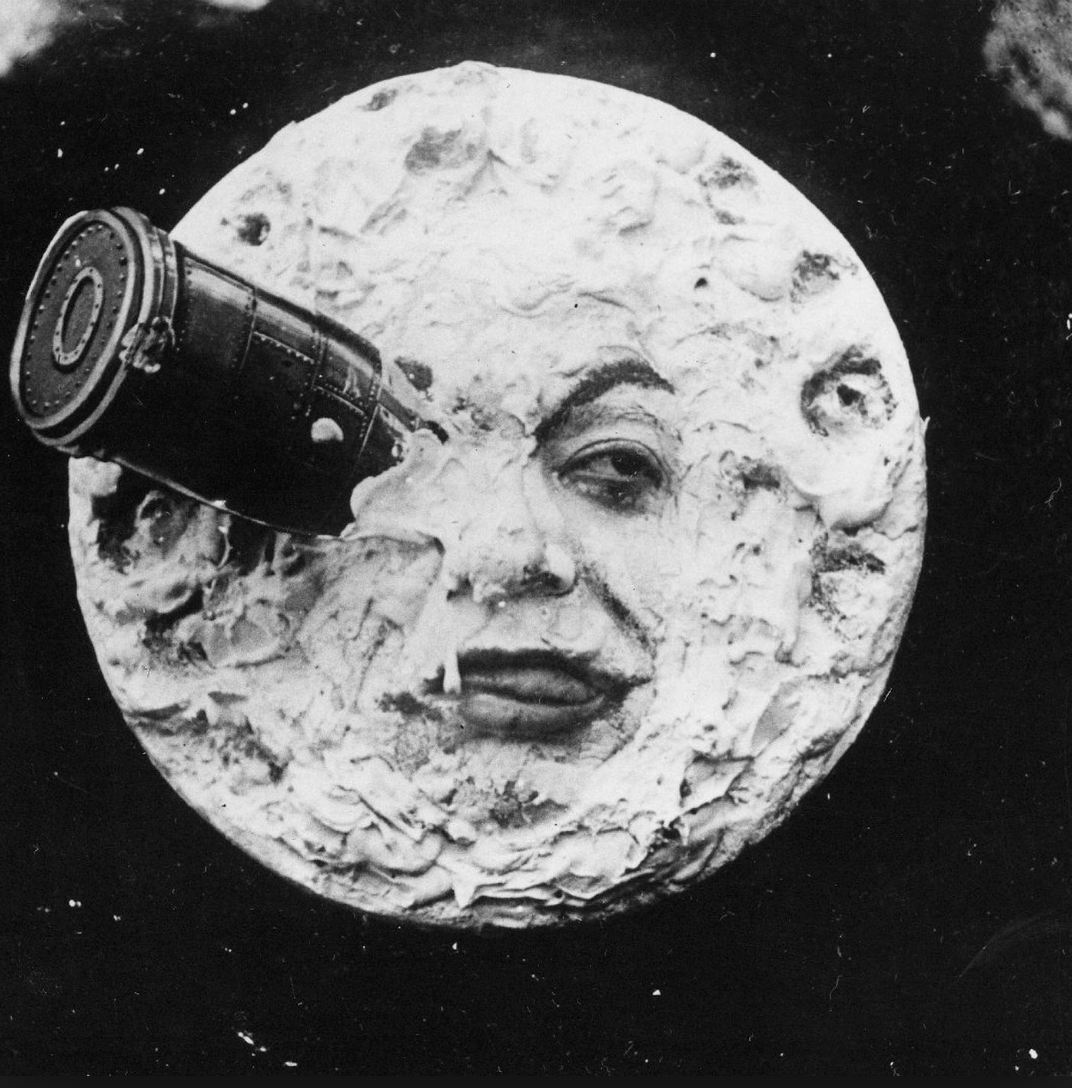A Trip to the Moon: Move Fast and Make Things
Georges Melies’ ‘A Trip to the Moon,’(‘Le Voyage dans la Lune’) is celebrated as the first true science-fiction film. Released in 1902, it presented cinema as a medium for fantasy, when hitherto it had been a vehicle for social realism. ‘A Trip to the Moon’ was only 14 minutes long, but this was revolutionary in an era when two minutes was an ordinary running time.
Melies himself plays a professor who convinces his fellow scientists to join him on an expedition to the moon. They travel in a cannon-propelled capsule, explore the moon's surface, escape from an underground group of lunar locals (Selenites), and return to Paris with a captive in triumph.
Melies had a background in theatre and magic, and ‘A Trip to the Moon’ boasts impressive stage sets, bizarre costumes, amusing pratfalls and dramatic explosions. He gives us a mushroom-filled grotto, lunar snow and engagingly insect-like aliens. He employs innovative cinematic techniques like superimposition, substitution-splice editing, pseudo-tracking shots and dissolves. We see the earth from the moon, and the stars come alive. We visit the Palace of the Selenites and watch the space capsule crash land into the sea. It’s a glorious flight of fancy.
But there’s also something troubling about ‘A Trip to the Moon’. Although it’s cheerful and comic in tone, one can’t help noticing the destructive impact that our heroic scientists have in the course of their adventures.
In one iconic scene the moon is represented as a face, and the space capsule lands painfully in its right eye. When they disembark at their destination, the explorers take to slaying the fragile locals and go on to kill their king. And at the end of the film the humans parade their captive Selenite in a somewhat colonial fashion.
So despite the fact that ‘A Trip to the Moon’ is a light-hearted entertainment, it does suggest some serious questions.
Why do explorers and pioneers consistently seem so wilful in their destruction of the new environments and societies that they discover? Why are they always out to conquer and tame, exploit and gain, shackle and own?
These questions could be posed to the world of business too.
Why is it that innovators and entrepreneurs seem so set on destroying everything that has gone before them? Why do we celebrate disruption as a prerequisite of progress? Why indeed do we applaud Mark Zuckerberg’s famous mantra: ‘move fast and break things’?
The Facebook founder was probably right about the imperative of speed in our accelerated world. But surely in an era of finite resources and fragile ecosystems, devastation and profligacy should not be culturally or commercially acceptable.
As creative professionals our focus should not be on destroying or dismantling; on eradicating the past or eliminating the competition. Rather we should turn our skills to preserving, reducing and replacing; to facilitating, enabling and enhancing; to solving, inspiring, and making. We should regard creative destruction, not as a code of behaviour, but as an oxymoron.
It seems obvious to me that creative industries should primarily concentrate on creating value – for businesses, institutions, consumers and society - and on doing so without damaging cultures, communities and the climate in the process.
Perhaps our motto should more reasonably be: ‘Move fast and make things.’
'In starlit nights I saw you.
So cruelly you kissed me,
Your lips a magic world,
Your sky all hung with jewels.
The killing moon
Will come too soon.
Fate
Up against your will.
Through the thick and thin,
He will wait until
You give yourself to him.'
Echo and the Bunnymen, ‘The Killing Moon’ (I McCulloch / L Pattinson / P De Freitas / W Sergeant)
No. 229
